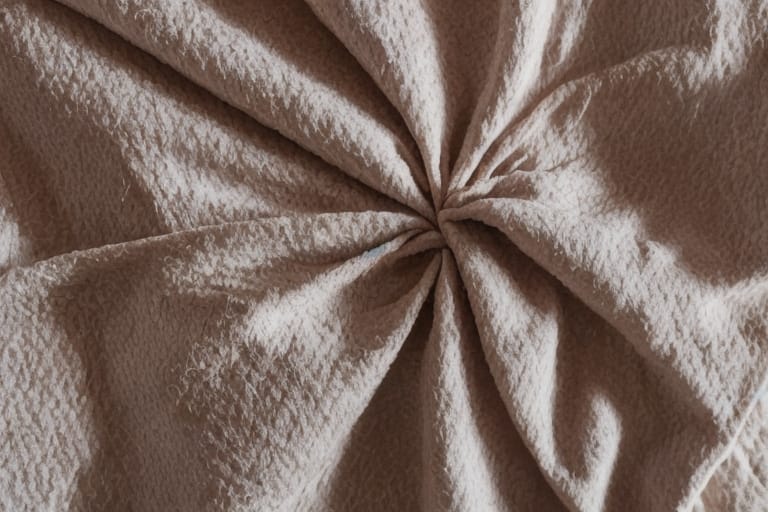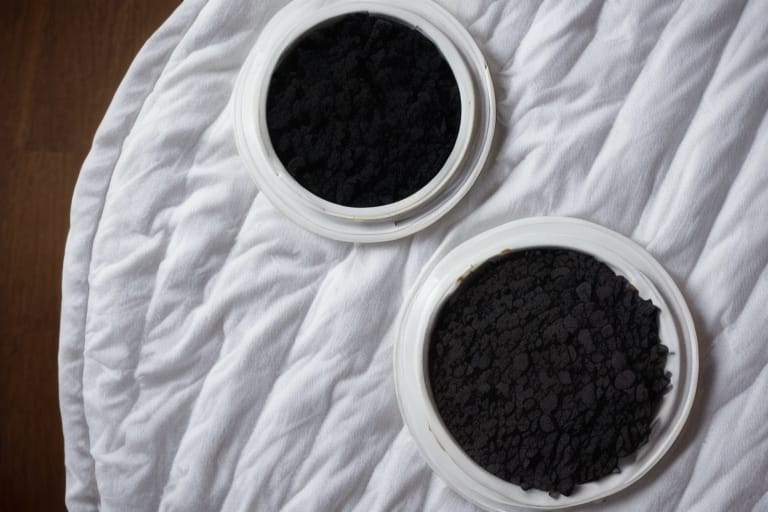Have you ever crawled into bed, wrapped yourself in your cozy down comforter, and been met with a less-than-fresh scent? You’re not alone. Even the highest quality down can start to smell over time when exposed to body oils, moisture, dust mites, and other contaminants.
The good news is with some simple maintenance and cleaning tricks, you can keep your down comforter fresh for years to come. This comprehensive guide will walk through common culprits of odor, prevention methods, cleaning techniques, odor removal solutions, and proper storage protocols. Arm yourself with the knowledge below to stop wondering “why does my down comforter smell” and get back to peaceful, allergen-free sleep.
What Causes Down Comforters to Smell
Before diving into solutions, it’s important to understand the science behind smelly down. Here are three of the most common contributing factors:
Moisture Build-Up
- Down insulation relies on loft and air circulation to regulate heat
- When moist from sweat, humidity, or other sources, down compresses and mildews
- Trapped moisture = perfect breeding ground for mold, bacteria, dust mites
Dust Mites and Mold
- Microscopic dust mites feed on skin cells and humidity inside down
- Mold spores also thrive in the warm, moist environment
- Both produce smelly waste and decomposition byproducts
Improper Storage Between Uses
- Folding/compressing down prevents air circulation
- Storing in moist/humid environments compounds issues
- Odors from last use remain trapped in stuffing
So in summary, anything that introduces or traps moisture makes down more smelly over time. The odor itself comes from some combination of dust mite waste, mold spores, bacteria, general mildew, and built-up sweat/skin oils.

How Down Comforter Odors Negatively Impact Health and Sleep Quality
Aside from just being unpleasant, smelly down comforters can cause real health issues and sleep disturbances:
Disrupted Sleep Cycles
- Unpleasant odors distract the brain and prevent restful sleep stages
- Toxins from mold, bacteria, mites also disrupt melatonin production
Allergic Reactions and Respiratory Distress
- Dust mites and mold release respiratory irritants
- Symptoms may include congestion, headaches upon waking
- Particularly harmful for asthma/allergy sufferers
So not only are smelly down comforters unpleasant, they can actually make you sick. By thoroughly cleaning and maintaining your comforter, you’ll breathe easier and sleep more soundly.
Cleaning Techniques to Freshen a Smelly Down Comforter
Now that we know why down comforters emit odors, let’s discuss cleaning methods to freshen a smelly one:
Washing Instructions
{Basic overview of machine washing process – water temp, cycles, detergents}
| Method | Description |
|---|---|
| Soak | Submerge comforter in tub with detergent, agitate water to lift dirt |
| Gentle Machine Wash | Front-loader, delicate cycle, cold water, mild detergent |
| Multiple Rinse Cycles | Removes all soap residues which degrade down |
| Air Dry | Tumble dry low heat or hang in sunlight |
The Importance of Thoroughly Drying Down
- As discussed earlier, any remaining moisturebreeds odor-causing contaminants
- Always air dry fully before storage/re-use
- May take several hours or 1-2 sunny days
By properly washing and completely drying your comforter, you’ll drastically reduce funky odors between uses. But for times when smells still linger or return quickly, special odor removal treatments may be needed…
DIY Odor Removal Solutions
Before taking more extreme measures like dry cleaning services, try these safe at-home odor remedies:
White Vinegar Soak
- Submerge comforter in bath tub with 1 cup vinegar
- Vinegar acid neutralizes alkaline odor molecules
- 1 cup baking soda boosts cleaning power
Activated Charcoal Freshening
- Spread briquettes inside comforter and leave for 12-24 hours
- Charcoal absorbs and traps odor molecules
- Then shake out and air dry in sunlight
Vinegar tackles existing smells, while activated charcoal prevents future odors. For best results, use both in conjunction for full odor removal and prevention between washes.
When To Consider Professional Cleaning Services
DIY cleaning and odor removal can go a long way, but sometimes professional services are warranted:
Dry Cleaning
- Sanitizes deeply with chemical solvents
- Risk of down damage if over-dried
- Recommended 1-2 times per year
Enzyme Cleaner Treatment
- Breaks down organic matter causing odors
- Adds fresh scent
- Use anytime smells return quickly
Consider investing professional cleaning services 1-2 times per year or whenever DIY methods no longer cut it.
Preventing Odors Through Proper Care and Storage
An ounce of prevention is worth a pound of cure when it comes to down comforter care. Follow these proactive steps to prevent odors between washes:
Allow Ample Air Circulation
- Flip/fluff down batting daily while making bed
- Avoid excessive folding or compression when not in use
- Use breathable duvet covers
Dry Thoroughly Before Storing
- Air dry fully draped over furniture or clothing line
- Do not fold/store if any moisture remains
Store Properly Between Uses
- Avoid plastic containers or vacuum bags
- Use breathable cotton or mesh storage bags
- Keep in cool, dry place away from humidity
With diligent preventative care, you can slow the rate of odor buildup and extend time between cleanings.
Specialty Products for Down Comforter Care
In addition to the basics above, consider using these specialty products for optimal odor control:
Laundry Detergents
- Made specifically for down and feathers
- Extra gentle cleaners lift soil without damaging delicate fabrics
- Examples: Defunkify Down Wash, Down Care ReviveX
Odor Defence Sprays
- Nanotechnology captures micro-particles causing smell
- Neutralizes musty smells from moisture
- Examples: Gear Aid ReviveX Down Cleaner
Though not always necessary, specialty down comforter detergents and sprays provide extra assurance against dingy odors between cleanings.
Environmental Factors Affecting Down Comforter Odors
Household conditions also impact the rate at which down comforters absorb odors:
Bedroom Humidity and Temperature
- Ideal = cool and dry around 65°F(18°C)
- Higher humidity speeds up dust mite and mold growth
- Run dehumidifier or AC to control moisture
Seasonal Considerations
- Summer = more humidity and sweat leading to faster odor buildup
- Clean more frequently in summer (every 2-3 months)
- Spring and fall every 4-6 months
Adjust your down comforter cleaning schedule based on weather patterns in your local environment.
Takeaways: Keeping Down Fresh and Odor-Free
Hopefully this guide gave you new insight into the science behind down comforter odors plus plenty of solutions. Here’s a quick summary of the key tips for keeping your down smelling fresh for years to come:
- Allow ample air circulation when using and storing
- Wash using cool water delicate cycles
- Always thoroughly dry down before storing
- Store in breathable fabric such as cotton or mesh
- Refresh with vinegar and activated charcoal between washes
- Professionally clean 1-2 times per year
- Adjust cleaning frequency for weather/seasons
- Use specialty down care products when needed
- Maintain bedroom humidity and temperature
Follow these best practices and you’ll stop wondering “why does my down comforter smell” once and for all. No one should have to choose between cozy warmth and fresh scent. With the right care, you truly can have both.

Frequently Asked Questions
What’s the best way to wash my down comforter?
Use a front loading washing machine, cold delicate cycle, and mild detergent. Be sure to run multiple rinse cycles to fully remove soap residues which can damage delicate down.
How do I thoroughly dry my down comforter?
It’s critical to completely air dry down comforters, either by machine drying on a low no heat tumble setting or draped over a clothing line in direct sunlight. Let it fully dry before storing or using to prevent moisture buildup leading to mold and dust mites.
Can I use bleach or other harsh chemicals to clean my down comforter?
No, bleaches and harsh detergents can damage the down insulation. Use only specialty down soaps or mild enzymatic cleaners approved for use on delicate fabrics.
What’s the best way to store a down comforter between uses?
Store down comforters in breathable all-cotton or mesh bags, not plastic containers or vacuum bags. Keep in a cool, dry place to allow airflow and slow accumulation of humidity leading to mold, mildew, and dust mite growth.
How can I keep my down comforter fresh between washings?
Use DIY odor removal methods like vinegar soaks or activated charcoal absorption between full machine washings. Proper air drying and breathable storage also help slow odor buildup from moisture or dust mites.
When should I have my down comforter professionally cleaned?
Most experts recommend professional dry cleaning or enzyme treatments for your down comforter 1-2 times per year. This sanitizes more thoroughly against odor-causing bacteria than home washing methods.
Why does down insulation absorb odors more than other fabrics?
The fluffy structure with lots of airflow that makes down good insulation also readily absorbs odors. Meanwhile natural feather oils and dust mite waste lead to smell buildup over time. Proper cleaning and storage are key for odor prevention.








